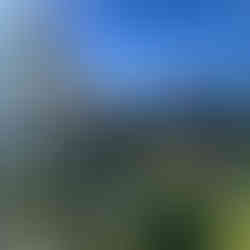Wairākau - Presentation & Nursery Official Opening
- Wāhi Āwhina

- Jun 5, 2024
- 4 min read
This Tuesday, our staff hui was a special one, brimming with learning, community, and a deep connection to nature. Facilitated by Ishmael and Peter, the session featured an enlightening presentation on Wairākau, providing a profound insight into the history and impacts on land in the last 200 years and the mahi Wairākau is doing to help restore the gully around the Te Ara Hou Village. Read the whole presentation below.
During the presentation staff were given an engaging task: identifying various plants by examining clippings of their leaves. This activity was not only fun but also a fantastic way to test and expand our knowledge of the diverse plant life that surrounds us. It was a reminder of the intricate beauty and utility of nature, encouraging everyone to look more closely and appreciate the flora that we might otherwise take for granted.
Opening of the New Nursery
The highlight of the hui was the official opening of the newly established nursery behind He Ūkaipō. Led by Matua Pine, the ceremony was a heartfelt moment that marked the beginning of a new chapter for our community's engagement with nature. The nursery is set to be a cornerstone for learning, growth, and sustainability, showcasing the incredible mahi that Ishmael and the team have dedicated themselves to over the past several months.
We concluded the hui with the waiata "Purea nei," a beautiful song that encapsulates the themes of cleansing and renewal. It was a fitting end to a day focused on connecting with and celebrating the natural world.
After the official opening, we had the opportunity to walk through the nursery, observing the array of plants and the careful, thoughtful work that has gone into creating this space. It was inspiring to see the tangible results of the team's efforts and to imagine the potential for future growth and learning.
Wairākau Presentation
Aotearoa was once almost completely covered in dense subtropical forest. As a result of 80 million years of evolution in isolation from other land masses, a large number of New Zealand’s native species are endemic – meaning they do not naturally occur anywhere else in the world. With an estimated 80,000 endemic species.
This uniqueness makes Aotearoa’s ecosystems and species particularly vulnerable to disturbances from introduced species and land use changes.
Over the last 200 years Aotearoa’s landscapes have been dramatically altered. More than 25,000 plant species, 54 mammal species, and about 2,000 invertebrate species have been introduced to New Zealand. While all these introductions have increased our country’s likeness to Britain and Europe, they have also altered Aotearoa’s ecology permanently and set it on a completely different evolutionary trajectory. Of the mammals and plants, many have become invasive pests praying on our ill equipped and vulnerable birds and insects and choking our native plants.
The vast majority of our native forests and wetlands have been logged, burnt or drained to make way for farms. Between 1840 and 1920 enormous fires raged across the country, part of a process referred to as “breaking in the land”. This process left the land vulnerable to erosion, polluting our rivers, streams and harbour’s. We rank as one the worst in the world for sediment pollution. With 192 million tons of soil lost to our water ways each year. In Hamilton, it is estimated that there is only about 2% native plant cover. Hamilton has no original virgin forest left and only very small fragments f mature native forest. We are completely surrounded by farm land. The closest real forests are at least half an hour drive and even these are really only small islands, that were speared because the terrain was too steep or rugged to farm. They are like little islands in a desert of farmland.
It is important to remember our history, to remember what went before us and have a sense of place. Modern development of roads and building often alters the land so much that it is left unrecognizable from what it was before and because so many of our native species have been pushed out due to habitat loss and predation we have lost our connection and relationship to the whenua and the other living things we share it with.
“In the end we will conserve only what we love, we will love only what we understand, and we will understand only what we are taught.”
Many of the tangata whaiora we work with are a direct result of the injustices of the past. Deep generational issues that go back to the confiscation of land, displacement of people and loss of cultural heritage. Colonization has negatively impacted Māori and the ecology of this land. Western colonization also brought with it, an economic system that is based on infinite growth in world of finite resources, one that forces the commodification of everything and leaves us disconnected from the earth.
To be involved in the restoration of some of our damaged and degraded ecosystems and play a small part in the undoing of some of the damage caused through colonization and the mistakes of the past, can be a valuable part of the reintegration process for our Tangata Whaiora. It provides opportunities for people to reconnect with the whenua and each other.

































Comments